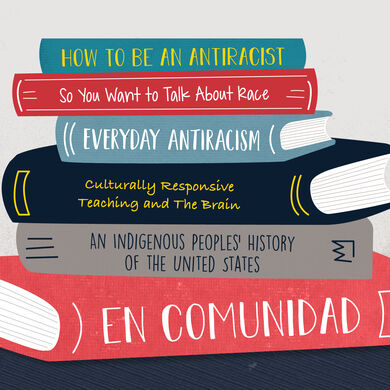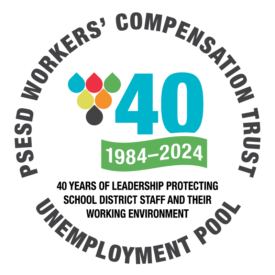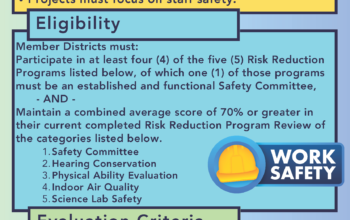Puget Sound Workers’ Compensation Trust & Unemployment Pool staff embarked upon a learning journey together that, among other activities, requires small team presentations of characteristics frequently referred to when discussing White Supremacy Culture.
Our study is in alignment with the Puget Sound Educational Service District’s END, Success for Each Child and Eliminate the Opportunity Gap by Leading with Racial Equity. We’ve adopted anti-racist leadership competencies to guide our work in service to our school district partners, staff, and students.
Through articles and links, we will publish in this space a variety of words and phrases used in racial equity studies that are enabling us, “to identify and name the cultural norms and standards,” we want as, “a first step to making room for a truly multi-cultural organization.”
We invite you to walk with us and we look forward to continuing our partnership with school districts to support success for all students through the elimination of opportunity gaps and by becoming an anti-racist, multicultural organization.

Antiracist Culturally Responsive Practices Framework (BOLD Moves definition):
The Antiracist Culturally Responsive Framework is a framework designed to support ESD staff and educational partners in developing and implementing culturally responsive curriculum to eliminate the opportunity gap for each child. The framework is predicated upon the following principles:
* Antiracist culturally responsive practice requires a systemic approach to address educational outcome inequities that are being perpetuated in our education system.
* Creating antiracist culturally responsive education systems is a narrative process.
* Relationships are key to antiracist culturally responsive practices.
* Antiracist culturally responsive practice is an adaptive work requiring all school and community leaders develop awareness, knowledge, and skills in adaptive change.
* Tools developed to support this strategy will draw upon multiple literacies.
* Antiracist culturally responsive practice requires on-going attention at the individual, group, and organizational levels.

Coalition
A coalition is a pact or treaty among individuals or groups, during which they cooperate in joint action, each in their own self-interest, joining forces together for a common cause. This alliance may be temporary or a matter of convenience. A coalition thus differs from a more formal covenant; possibly described as a joining of ‘factions’, usually those with overlapping interests rather than opposing.

Disproportionate
Disproportionality refers to the “overrepresentation” and “underrepresentation” of a particular
demographic group in a specific program/organization relative to the presence of this group in the
overall student population.

Educational Equity
In the field of education, the term equity refers to the principle of fairness. While it is often used
interchangeably with the related principle of equality, equity encompasses a wide variety of educational
models, programs, and strategies that may be considered fair, but not necessarily equal. It has been
said that “equity is the process; equality is the outcome”, given that equity—what is fair and just—may
not, in the process of educating students, reflect strict equality—what is applied, allocated, or
distributed equally. Inequities occur as when biased or unfair policies, programs, practices, or situations
contribute to a lack of equality in educational performance, results, and outcomes.

Race
A social construct that has no biological basis, which artificially divides people into distinct groups based
on characteristics such as physical appearance (particularly color), ancestral heritage, cultural affiliation,
and cultural history. Racial categories subsume ethnic groups.



